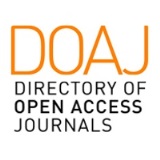The didactic use of fossils as a teaching tool in Earth Sciences education
DOI:
https://doi.org/10.58265/pulso.4910Abstract
Our proposal aims to familiarise students with the field of Palaeontology by engaging them in simple activities that dispel any preconceived notions they may hold and introduce them to basic paleontological concepts.
The methodology and resources required for these activities can be assembled by the teacher from a variety of documentary sources on the subject, tailored to the students' age group.
Downloads
References
ANGELA P. y ANGELA, A. (1999). La extraordinaria historia de la vida. Grijalbo eds. 742 págs.
CRUZ, M. P.; NOVO, J.A. y CALOGNE, A. (1994). Investigando fósiles. Campo Abierto, 11: 241-250.
DOMÉNECH, R. y MARTINELL, J. (1996). Introducción a los fósiles. Masson, S.A. 288 págs.
ECHEVARRÍA, J. (1995). Filosofia de la Ciencia. Editorial Akal. Madrid.
GOULD, S.J. (1993). El libro de la vida. Ed. Crítica, 256 págs.
IZQUIERDO, M.; QUINTANILLA, M. y SANMARTÍ, N. (1997). Una fundamentación didáctica y epistemológica acerca de la construcción creativa del conocimiento científico en el laboratorio de ciencias. Avances en la didáctica de las Ciencias experimentales, 3 7-4 7. Univ.
de Huelva.
PERALES, F. J. (1994). Los trabajos prácticos y la didáctica de las Ciencias. Enseñanza de las Ciencias, 12 (1): 122-125.
SEQUEIRA, M.; LEITE, L. y DUARTE, M.C. (1993). Portuguese science teachers' education, attitudes and practise relative to the issue of alternative conceptions. Journal of Research in the Science Teaching. 30: 845-856.
WHYBROW, P.J. (2000). Thefossil hunters. Cambridge University Press, 212 págs. Historia de la vida.
Downloads
Published
How to Cite
Issue
Section
License
Copyright (c) 2022 Pulso. Revista de educación

This work is licensed under a Creative Commons Attribution-NonCommercial-NoDerivatives 3.0 Unported License.
This journal offers immediate open access to its content based on the idea that offering readers free access to research favours a global exchange of knowledge.
Papers are published in the electronic version of the journal under a Creative Commons License: Attribution-NonCommercial-No derivatives 4.0 International
Authors are allowed and encouraged to promote the post-print version (reviewed and accepted for publication version) of their work online before publishing them. This favours their earlier circulation and dissemination and thus a possible increase in their citation and reach among the academic community.













